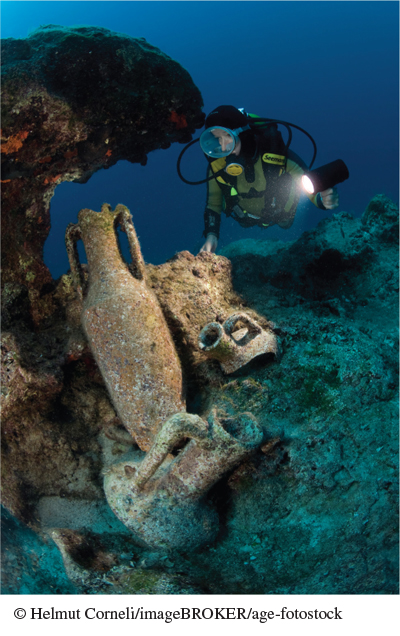A History of Western Society: Printed Page 106
The Past Living Now
Container Shipping

A t the beginning of the twentieth century, goods carried in the world’s ships were packed in a variety of types of containers — barrels, boxes, bags, pallets, and cartons — which were loaded into and unloaded from the holds of ships by skilled longshoremen. At the beginning of the twenty-
The history of standardized shipping containers is actually much longer than a century, however. In the fourth millennium B.C.E. large two-
In the Hellenistic period amphoras became ubiquitous throughout the Mediterranean and carried goods eastward to the Black Sea, Persian Gulf, and Red Sea. The Ptolemies of Egypt sent amphoras and their contents farther still, to Arabia, eastern Africa, and India. Thus merchants and mariners who had never seen the Mediterranean depended on these containers, just as people today depend on goods sent in shipping containers from places they have never been. Like modern containers, amphoras often had stamps, inscriptions, or other markings indicating where they were made, where they were going, and what their contents were. These markings and the remains of the amphoras’ contents have provided marine archaeologists and historians with much of their information about trade in the Hellenistic world. Amphoras made specifically for wine seem to have been standardized in size and shape so that they could fit on racks in ships, making long-
QUESTIONS FOR ANALYSIS
- Why would standardized containers be an impetus to trade?
- The Hellenistic period is often described as a time of “globalization.” How would you compare Hellenistic globalization to that of today?